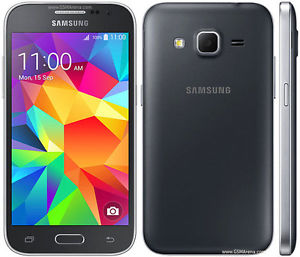Mobile phone: Difference between revisions
(add image, streamline sections, and make to send) |
(add EO-440) |
||
| Line 36: | Line 36: | ||
With the advent of digital transmission came devices that combined cellular phones with [[computer]]s, which are commonly known as smartphones. | With the advent of digital transmission came devices that combined cellular phones with [[computer]]s, which are commonly known as smartphones. | ||
The first smartphone was the [[IBM Simon]] | The first smartphone was the [[IBM Simon]], which was announced on November 23, [[1992]] as the Simon Personal Communicator. It had an [[LCD]] touch screen and could send and receive telephone calls, [[e-mail]], faxes, and pager data. It also had [[personal data assistant]], or PDA, [[application software|application]]s including an address book, appointment scheduler, calculator, calendar, notepad, and world time clock. An onscreen keyboard allowed input, and it had predictive input capabilities that could optionally finish a word selected by the program while it was being typed. Using the stylus, it also had the capability to create handwritten annotations. | ||
The first phablets, or tablet computers with phone capabilities, were the [[AT&T]] [[EO-440 and EO-880]]. They were released to the public in April [[1993]]. | |||
Revision as of 04:08, 28 September 2023

| |
| Mobile phone | |
| Designer | various |
|---|---|
| Manufacturer | various |
| CPU | various |
| Graphics | various |
| Memory | various |
| Media | various |
| Released | 1946-present |
| Added to Museum | December 25, 2001 |
A mobile phone, also known as cellular phone, cell phone, or hand phone, is a portable telephone that receives calls over a radio frequency.
0G: Pre-cellular mobile radio telephone
Mobile radio telephone services preceded cellular telephones. As mobile technology is categorized into generations, these services are commonly referred to as the zero generation or 0G.
The Mobile Telephone Service by Bell Systems, led by AT&T, launched in St. Louis, Missouri, United States, on June 17, 1946. The telephone audio was carried over VHF signals. Communications equipment by Motorola carried the VHF signals, however, there was a limited amount of frequencies available which caused the service to quickly reach its capacity limit.
The Improved Mobile Telephone Service, also by Bell Systems, replaced MTS and improved upon it by using direct dial connections rather than using a live operator and by allowing both sides of the conversation to communicate simultaneously. Launched in 1964, it was operated in the United States and Canada.
The Portable Executive Phone was released at the Consumer Electronics Show in New York City on June 23, 1968. It cost $2000 USD and required an FCC license to operate.
1G: first generation - analog cellular
In December 1947, two engineers at Bell Labs named Douglas H. Ring and W. Rae Young, proposed using antennas in hexagonal cells for mobile phones in automobiles. However, the technology needed to realize the idea did not exist at the time.
It wasn't until 1965 when the Bell Labs engineers, Richard H. Frenkiel, Joel S. Engel, and Philip T. Porter, expanded the proposal into a workable design. Porter suggested using directional antennas to reduce interference as well as the system to dial without connecting to the network until the call is sent to reduce channel usage.
The first commercial analog cellular network was launched in Japan by Nippon Telegraph and Telephone in the Tokyo metropolitan area in 1979. The first phone used by this service was the Panasonic TZ-801.
2G: second generation - digital cellular services and first smartphones
The first digital cellular services were available in two competing digital transmission standards.
The first digital cellular network was launched in Finland in 1991. It used the standard developed by the European Telecommunications Standards Institute. This standard was known as the Global System for Mobile Communications, or GSM.
With the advent of digital transmission came devices that combined cellular phones with computers, which are commonly known as smartphones.
The first smartphone was the IBM Simon, which was announced on November 23, 1992 as the Simon Personal Communicator. It had an LCD touch screen and could send and receive telephone calls, e-mail, faxes, and pager data. It also had personal data assistant, or PDA, applications including an address book, appointment scheduler, calculator, calendar, notepad, and world time clock. An onscreen keyboard allowed input, and it had predictive input capabilities that could optionally finish a word selected by the program while it was being typed. Using the stylus, it also had the capability to create handwritten annotations.
The first phablets, or tablet computers with phone capabilities, were the AT&T EO-440 and EO-880. They were released to the public in April 1993.